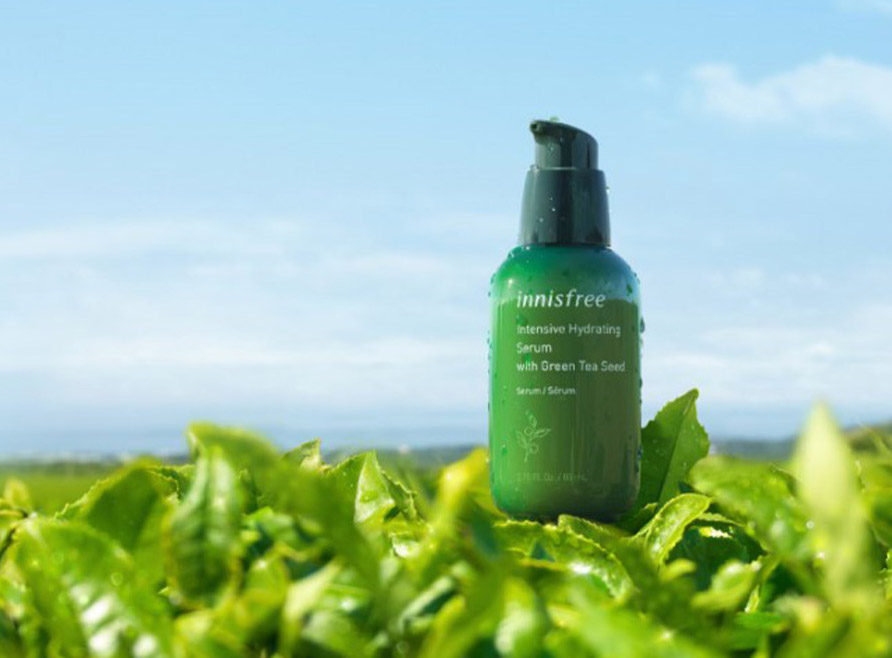Summer Skincare Prep: How to Enjoy the Sun Without Sacrificing Your Skin
3 Comments
Jude Chao
Jun 20, 2019
Look, we’d love to be poreless and line-free until we’re 150, but at what cost? Life is meant to be lived — and that includes enjoying the great outdoors. Here, a few summer skincare prep tips on how to do just that without totally sacrificing your skin.
Can you believe it’s June? For me and pretty much every one of my friends, the first half of 2019 has flown by. But as much as we might like to get some of that time back, the reality is that summer is upon us, and in many parts of the world, that means blazing sun, trips to the beach, and cooling dips in the pool.
In some corners of the skincare community, summer also means fanatical sun avoidance. Once we learn how UV radiation can damage skin, leading to dark spots, accelerated skin aging, and even cancer, sun shunning can seem like the best (or only!) solution. But I’m not about that dark cave life. As someone who lives in a gorgeous coastal area and loves the feeling of the sun’s warmth penetrating to the depths of my chronically cold bones, I use skincare to balance my love of sunshine with my fear of skin damage. Here’s how.

1. Always! Wear! Sunscreen!
No surprise here: Sunscreen is our primary defense against sun damage. A well-formulated sunscreen applied in adequate amounts will protect skin from the majority of UV radiation we face each day. But what should we look for in a sunscreen?
The most basic requirement, of course, is high UVB and UVA protection.
UVB is short-wave radiation that generally affects the outermost layers of skin. It’s responsible for sunburns, “plays a key role in the development of cancer,” and also contributes to tanning and UV-induced skin aging. UVB protection is indicated on sunscreen products as the SPF rating. When looking for a sunscreen, I always choose one with a relatively high SPF: 45 or 50+ are ideal to me.
UVA, meanwhile, is long-wave radiation that penetrates deeper into skin than UVB. That’s bad news for your skin. UVA damage is the primary cause of tanning (a damage response) and premature skin aging; it also contributes to the formation of skin cancers. And here’s where U.S. sunscreens fail. On a U.S. sunscreen label, the only indicator of UVA protective capabilities is the “broad spectrum” designation, which shows that the sunscreen does protect from UVA as well as UVB. How much protection does it offer, though? U.S. sunscreens leave us in the dark, pun intended.
On Japanese, Korean, and Taiwanese sunscreens, UVA protection is indicated by the PA rating. PA+ is UVA protection in the lowest range, while PA++++ is the highest. I only use sunscreens with at least a PA+++ rating.
Beyond protection, the sunscreen(s) you choose need to be usable in very generous quantities. In order to get the protection indicated by the sunscreen’s packaging, you need to apply about 2mg/cm² of product, no matter what format the product is. That’s around ¼ tsp for the face alone. Measure it out sometime. It’s a lot. (This is why powder sunscreens and sunscreen in makeup should not be used as your primary sunscreen. There’s no way you’re going to apply that much to your face.)
I look for sunscreens that dry down smoothly and without white cast even when applied very thickly. For me, that generally means chemical sunscreen filters in “water gel” formulations. I’m fine with alcohol in my sunscreens as it often contributes to greater cosmetic elegance, which contributes to me being able to use the sunscreen at the optimal dosage.
View this post on Instagram
This summer, I’m very fond of Missha All Around Safe Block Aqua Sun Gel, which is SPF 50+, PA++++, inexpensive, and fast-drying. It leaves the ideal totally clear and totally non-greasy finish on my skin, with a slight mattifying effect. For a bit more moisture with a similar finish, I also like Earth’s Recipe Waterful Sun Gel. On beach, swim, and sweaty days, I reach for Skin Aqua UV Super Moisture Milk. This is an alarmingly water- (and soap-) resistant Japanese sunscreen that delivers a clear and soft matte finish and does not budge from my skin until I take it off with cleansing oil.
Apply your sunscreen in generous amounts before you leave the house every morning, and if you’re in the sun for longer than a couple of hours, reapply as needed. I like to spread the sunscreen between my palms and very gently pat it on over makeup.
2. Supplement your sunscreen with antioxidants
By now, we’ve all heard about the importance of antioxidants in your skincare. Antioxidants neutralize free radicals, which are unstable molecules that steal electrons from surrounding cells, causing oxidative stress that can lead to premature skin aging and DNA damage that can lead to the development of cancer.
UV exposure can generate free radicals in skin, making antioxidant-rich skincare extra important during the months when we’re out in the sun much more than usual. Vitamin C is one of the best established and studied photoprotective antioxidants. Supplementing your sunscreen with once-daily application of a 15-20% L-ascorbic acid vitamin C serum at a low pH, like Ti’am My Signature C Source or Timeless C+E+Ferulic Acid serum, will go along way towards defending your skin from free radical damage.
Other notable antioxidants and antioxidant-providing ingredients to look for are vitamin E (tocopherol), vitamin B (niacinamide), vitamin A (from which retinoids are derived), astaxanthin, and green tea extracts.

The importance of antioxidants is why my skincare typically includes at least a few layers of different extract-heavy products, even in summer. With the exception of actives products that clearly disclose the percentage of the vitamin C or retinoid included, concentrations can be a guessing game. I’d rather be safe than sorry, so I pile on what I can. It seems to be working out well so far.
3. Cool down inflammation
Heat and sun also cause inflammation, which is bad for skin at a cellular level. Antioxidants can stave off some inflammation-causing free radicals, but to complete your skin-protecting summer skincare stash, you’ll want to look for ways to cool and calm your skin during and after a day of lounging in the sun.
In terms of ingredients, my three favorites for reducing heat and inflammation in skin are Camellia sinensis/green tea, Centella asiatica (particularly in Purito’s excellent Centella Green Level line), and snail mucin. And of these, snail is my absolute favorite. Not only does snail mucin reduce inflammation and improve my skin’s smoothness, elasticity, and ability to heal from irritation and breakouts, but it may also help to repair photodamaged skin.
Beyond looking for anti-inflammatory ingredients, there are also mechanical methods of cooling overheated skin. I keep a collection of facial mists in my fridge for a quick spritz on a hot day. As far as formulation goes, I don’t have any particular favorites (a mist is a mist, as far as I’m concerned), but I really like SanDaWha Camellia Flower Hydrating Mist for its fine mist and beautiful scent.
Right next to the facial mists in my fridge are the sheet masks. Of course, the sheet masks.

A cold sheet mask at the end of a hot day is one of my favorite feelings in the world. Chilled, any sheet mask instantly gains a notable boost in instant anti-inflammatory effects. Of course, they’re even better when the masks themselves contain inflammation-fighting ingredients. I love a cold 23 Years Old Cocoon Willow Silky Mask for the ginseng, licorice, and camellia extracts or a nice icy Papa Recipe Bombee Rose Gold Honey Mask Pack for the honey, propolis, and royal jelly.
Putting it all together
So there’s your summer skincare strategy: lots of sunscreen, a varied diet of antioxidants, and plenty of calming extracts and cooling mists and masks to keep your skin healthy and beautiful while you enjoy the sun.
Can we avoid all sun damage altogether? Probably not, not without drastic and most likely mentally and physically unhealthy lifestyle changes. I don’t advise making those changes. As much as we love our skin, skin is to be lived in, and for most of us, living well does mean getting out into the sunshine. And that’s OK. Do your best to give your skin the protection it needs, and even if a stray ray of sun breaks through your defenses once in a while, your skin will still reward you.
Happy summer!
So are you a cave rat during the summer or do you revel in all that sunshine? What's your summer skincare prep look like? Let's chat in the comments below!
Author:
Jude Chao
Jude writes as Fiddy Snails at the K-beauty and skincare blog Fifty Shades of Snail and can be found on Instagram @fiddysnails. Named the ELLE Malaysia Beauty Blogger of the Month for June/July 2017 and one of ELLE Magazine‘s 10 Cool Beauty Bloggers to Watch in 2018, Jude loves ginseng, snail, honey, propolis, and tuna fish kimbap, though she generally doesn’t put the kimbap on her face.
Comments
Loading...